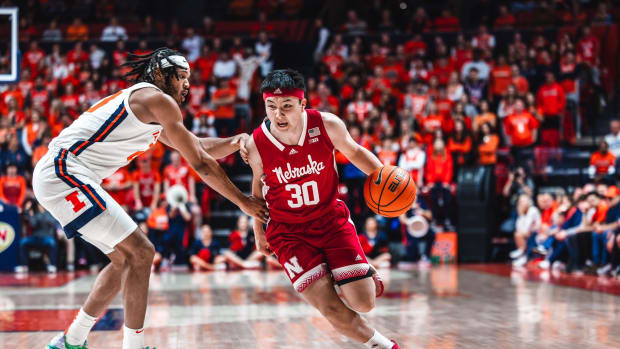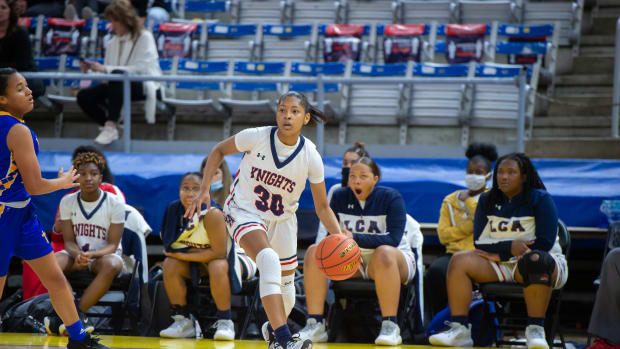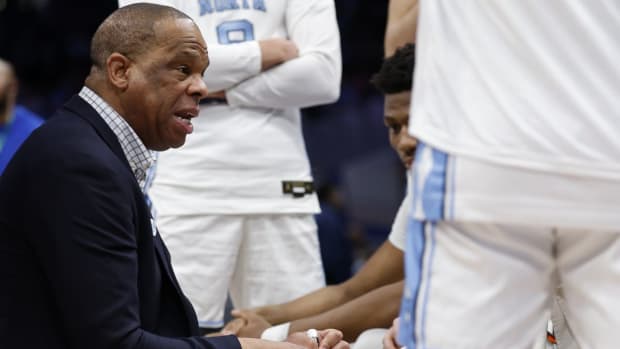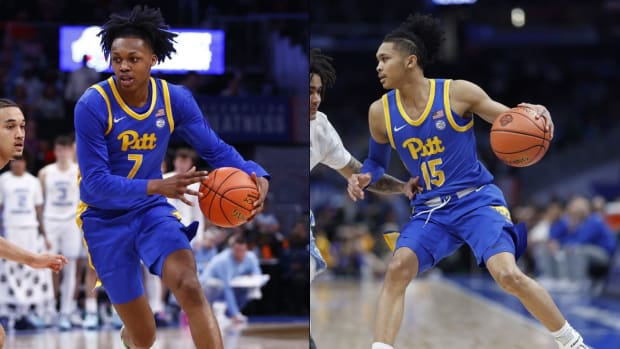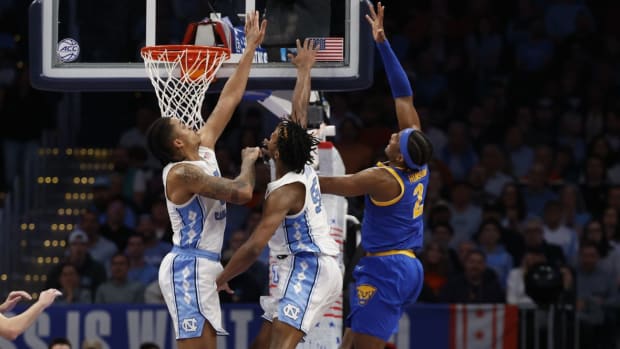Big East Offseason Report: Power Rankings and Burning Questions for 2019-20
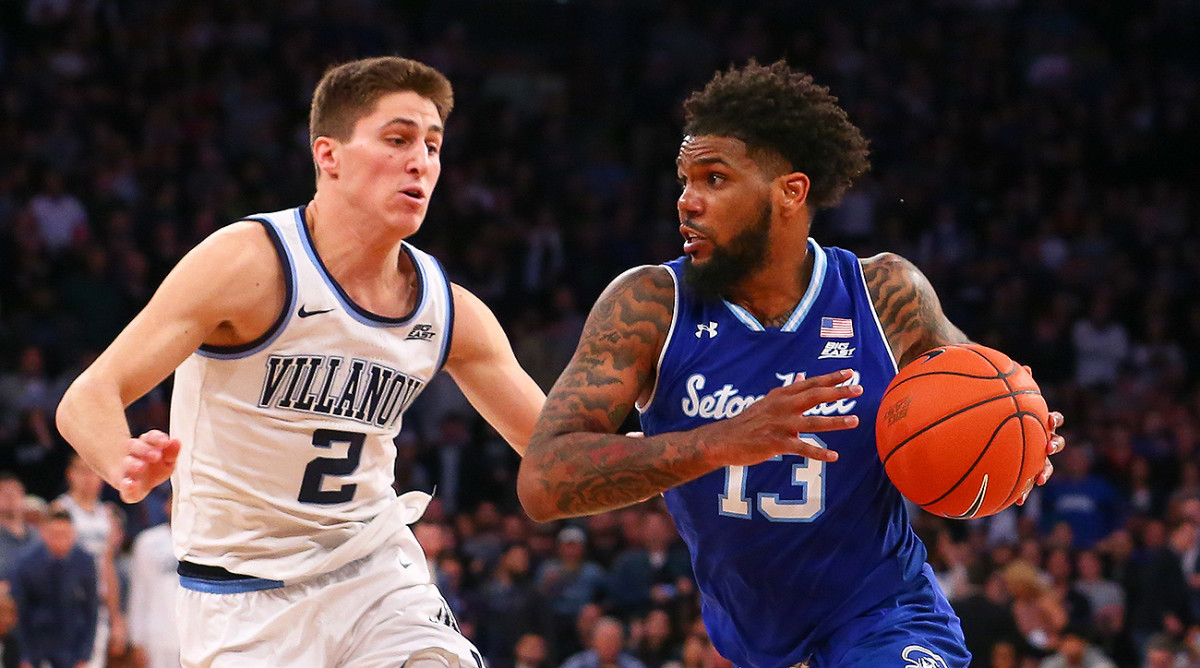
As the midpoint of college basketball’s offseason approaches, it’s time to check in on every major conference. Every team in the country has questions at this point of the summer, some more pressing than others. So in addition to power ranking each league, we’ll be asking some burning questions about the conference that won’t be answered until tip-off. With the AAC, ACC and Big 12 down, next up is the Big East.
Big East Summer Power Rankings
1. Seton Hall: The Pirates were solidified as top-tier Big East contenders when guard Myles Powell (23.1 points per game in 2018–19, 36.3% from three) decided to return for his senior season—the ninth and most important returnee among the team’s top 10 rotation players last season.
2. Villanova: No, the Wildcats will not have any seniors. But they do return three starters and their top reserve from last season’s Big East regular-season champs and add to them a top-10 recruiting class.
3. Creighton: Four starters are back from a team that won two NIT games. That includes junior wing Ty-Shon Alexander, who should be more comfortable in a leading role, and sophomore point guard Marcus Zegarowski, the younger brother of former Syracuse star Michael Carter-Williams.
4. Xavier: One of the Big East’s worst three-point shooting teams last season will get a boost from grad transfer Bryce Moore (39.0% last season at Western Michigan) as it looks to build on a strong 6–1 finish to the regular season.
5. Georgetown: The second year of the Patrick Ewing Era was encouraging, particularly the play of the Hoyas’ freshman class. The eligibility of ex-NC State seven-footer Omer Yurtseven will help offset the loss of big man Jessie Govan.
6. Marquette: Early spring talk of the Golden Eagles’ Final Four potential took a huge hit when brothers Sam and Joey Hauser departed for Virginia and Michigan State, respectively, but shooting extraordinaire Markus Howard will still be bombing away.
7. Providence: Getting Alpha Diallo back for his senior season provides the Friars not only additional continuity but also a go-to scorer. They could have another in the backcourt thanks to the arrival of UMass grad transfer Luwane Pipkins, who averaged 18.9 points over his last two seasons.
8. DePaul: Michigan Mr. Basketball Romeo Weems, a top-60 recruit, surprised some when he chose the Blue Demons over his home state’s powerhouses, but it’s that kind of confidence that Dave Leitao’s team will need in order to move into the Big East’s middle tier.
9. Butler: Coming off only their second losing season since 2005, the Bulldogs will add four-star guard Khalif Battle and 7’1” Valpo grad transfer Derrik Smits—son of former Pacers all-star Rik—as LaVall Jordan tries to rebound in Year 3.
10. St. John’s: Gone from last season’s NCAA tournament team are star guard Shamorie Ponds, league DPOY Justin Simon, coach Chris Mullins and a trio of transfers. In are former Arkansas coach Mike Anderson and NC State transfer Ian Steere for what looks like a transitional season in Queens.
Burning Questions
Is there a true national contender in the bunch?
Last year none of the Big East’s four NCAA tournament team received a seed higher than a No. 5, and three of its four teams lost their first tourney game. (The fourth, No. 6-seeded Villanova, won its first game before being blown out by Purdue in its second.) That came after a season in which the league claimed two No. 1 seeds (Villanova and Xavier) and one of its teams won its second national title in three seasons. The Wildcats look to be in the mix for a Big East crown yet again, but they don’t look to be near the level of their recent championship teams, and Seton Hall would need to make quite a leap from last season with much of the same personnel to get in the Final Four conversation. This could be another March where the Big East sits out the later rounds.
Will Seton Hall break through?
The Pirates haven’t made a Sweet 16 since 2000, when Tommy Amaker was helming the ship. Kevin Willard has slowly built the Hall into a program that is consistently good (four straight NCAA tournaments) but hasn’t had much postseason staying power (three first-round losses, and one second). This year Willard’s team will be seasoned and led by a potential conference POY candidate in Powell, plus it will add 7-foot Florida State transfer Ike Obiagu, who swatted an astounding 20.9% of opponents’ two-point attempts when on the floor in 2017-18. Those could be the ingredients for a memorable season in South Orange.
Can Jay Wright stitch together another Big East champ?
Last season was supposed to be a rare transitional year for the Wildcats, and in many ways it played out like one. But Wright still managed to coax an outright Big East title out of his relatively young team even as his vaunted five-star point guard struggled to earn playing time and eventually transferred out. He won’t have any seniors to lean on this time around, but Jermaine Samuels and Saddiq Bey both finished last season like they could be ready for key roles, and top-20 recruits Jeremiah Robinson-Earl and Bryan Antoine have the talent to contribute immediately (the latter, however, is recovering from shoulder surgery). If this team is in the mix again, it could mean really good things for 2020–21.
What will Markus Howard’s supporting cast look like?
The Arizona-born sharpshooter has been piling up points at Marquette for a few years now, culminating in last season’s 25.0 points-per-game average as a junior and three games of 45-plus points. But with the Hausers gone, the other most significant offensive contributor returning from last year’s team is guard Sacar Anim, who averaged only 8.3 points and 7.3 shot attempts per game last season. That could mean a big role for Utah State transfer Koby McEwen, who averaged 15.6 points as a sophomore there but saw his three-point shooting dip from 42.0% as a freshman to 33.0%. Freshman guard Symir Torrence, a top-50 2020 recruit who reclassified to enroll this fall, is considered more of a distributor, which could help the offense in other ways but wouldn’t necessarily clear up the scoring picture. Howard could be facing even more defensive attention this fall.
How much has Georgetown grown up?
Last season’s Big East All-Freshman team included three first-year Hoyas—guards James Akingo and Mac McClung and forward Josh LeBlanc—who were also second, third, and fourth, respectively, on the team in scoring. The downside of that rookie reliance showed in Georgetown’s trouble in some close games and with holding some leads. But with a full season of full-time experience under all of their belts, the Hoyas’ Class of 2018 (plus junior Jamorko Pickett) has the ability to make a leap that has the team going further than an NIT first-round appearance.
Can a healthy Naji Marshall be the efficient leader Xavier needs?
The 6’7” Atlantic City native saw his role drastically increase as a sophomore, going from using 18.3% of the Musketeers’ possessions in 21.8 minutes in his first season to using 25.7% in 35.9 minutes in his second. With that change came a significant dip in efficiency, with his offensive rating dropping from 110.7 to 95.1 per kenpom.com. Part of that is to be expected as a young player is asked to do more; another part of it was a slide in three-point shooting from 34.9% to 27.7%. The most significant part of all might be the back injury that plagued Marshall for much of the winter. Marshall should see an improvement in his efficiency simply by playing at full capacity this season, which will be a boon to a Xavier team that should again be relying on him heavily.
Can Mike Anderson hit the ground running in Queens?
St. John’s has reached the NCAA tournament twice in the last eight seasons. Both times it then immediately changed coaches. That’s a curious way to rebuild a once-proud program that has spent most of this century floundering in the country’s supposed basketball capital, but it’s not like Chris Mullin nor predecessor Steve Lavin appeared to have the Johnnies set up for long-term success. Anderson, who has spent his entire career in the Midwest and South, is an odd hire (after an embarrassing, whiff-filled search) for a Northeast program that needs to make significant inroads in the local recruiting scene. But he does have a track record of consistently solid teams and coaches an uptempo style that could make up for his lack of established recruiting connections. For now he will have to keep things afloat with Mustapha Heron and L.J. Figueroa to avoid a total rebuild.

